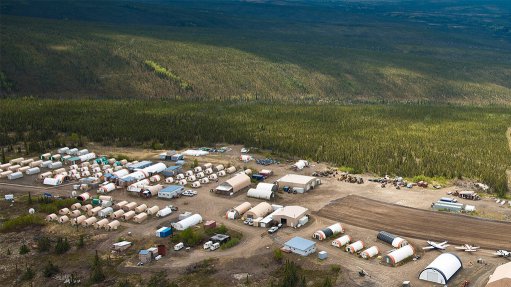
The Donlin gold project – one of the largest undeveloped openpit gold deposits – has jumped a major hurdle with the US Army Corp of Engineers and the Bureau of Land Management (BLM) issuing a record of decision (RoD) and awarding key federal permits, the co-owners of the project announced on Monday.
Barrick Gold and Novagold said that the Corps and BLM had issued a joint RoD four months after the final environmental impact statement was issued, marking the completion of the multi-year federal environmental review process.
The Corps also issued a combined Clean Water Act Section 404 and Rivers and Harbors Act Section 10 permit, while the BLM issued the offer to lease for the right-of-way for those portions of the natural gas pipeline that would cross federal lands.
Receipt of the ROD and federal permits represents an important milestone in the development of the gold project in the Yukon Kuskokwim region of Alaska. The companies said that they would now concentrate on wrapping up the optimisation studies and value enhancing options designed to reduce initial capital outlays and improve project economics.
Further details on the path forward would be provided in the fourth quarter, according to a joint statement.
Donlin has compliant measured and indicated resources of 39-million ounces of gold at a grade of 2.2 g/t. The project partners said last year that they would further optimise the project.
The latest updated feasibility study for the project envisions a 1.1-million-ounce-a-year project, with initial output averaging 1.5-million ounces of gold a year, over an expected 27-year mine life.
“As one of the largest undeveloped gold deposits in the world, Donlin Gold represents exceptional optionality within our portfolio. Now, with key permits in hand, we can concentrate on further exploring ways of reducing initial capital and unlocking the value of this asset for all of our partners, in keeping with our deep commitment to community engagement and environmental stewardship,” said Barrick executive VP for exploration and growth, Rob Krcmarov.
Novagold president and CEO Greg Lang extended gratitude to the Corps, BLM and other cooperating agencies for their successful navigation of the process, while thanking its native corporation partners for their support and commitment to the project.
“The RoD is a very detailed document, which serves as the foundation for issuance of the federal permits required for us to build a technically, environmentally, and financially responsible, as well as a socially sustainable, operation.”
OPPOSITION
However, a group representing Yukon and Kuskokwim region leaders said it was “outraged” by the RoD, stating that the social and environmental impacts of the mine would be devastating to the subsistence region and traditional Yup’ik way of life.
Yukon and Kuskokwim tribes had asked Alaska governor Bill Walker to give an extra year to project permitting so that tribes could “meaningfully participate” in project review, but now felt that the state and federal agencies had expedited the project at the cost of affected tribes and residents.
“From talking with tribes, there is an evident understanding that the Yukon-Kuskokwim communities had an expectation for an ‘open door’ government-to-government consultations with Donlin’s officials and scientists in each community. Such as state and federal governments made efforts of ‘public hearings’ that would take place on a community, regional, and state levels, prior to making a final decisions. Unfortunately, none of this has happened and there is still a concerned voice among tribes about the impacts of such a large project that is not being considered. The State of Alaska, BLM, and Army Corps of Engineers should ensure meaningful consultation and cooperation before deciding to make life-changing decision for a whole region of estimated 27 000 people. This is a drastic move on behalf of communities that would be greatly affected by the mine,” said Yukon-Kuskokwim River Alliance cofounder Alissa Nadine Rogers.
The group states that the final EIS details the impacts of the proposed mine, including increased levels of mercury both atmospherically deposited and in the Yukon and Kuskokwim river, damage to salmon habitat, disruption of smelt spawning, increased erosion of the banks of the Kuskokwim, and much more.